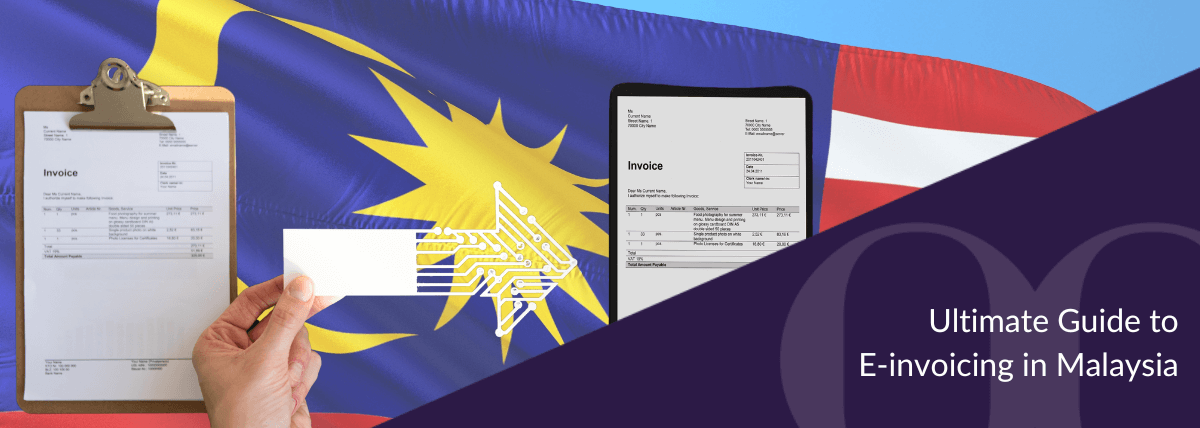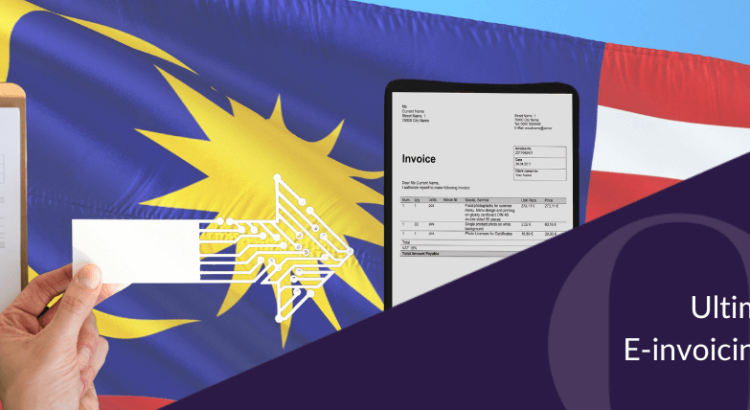In the digital era, e-invoicing is transforming business processes, boosting efficiency, and ensuring regulatory compliance. Malaysia’s adoption of this digital shift highlights the importance for businesses to understand the details of e-invoicing.
What Is E-invoicing and Why Is It Important?
E-invoicing enables the digital exchange of invoices between suppliers and buyers, eliminating paper-based processes. It makes transactions smoother, reduces errors, enhances transparency, and promotes cost savings.
Overview of E-invoicing in Malaysia
The Malaysian government’s e-invoicing mandate, powered by PEPPOL, modernises tax administration and promotes seamless electronic invoice exchange. The Malaysian Inland Revenue (LHDN) has confirmed the e-invoicing implementation will start on 1 August, beginning with businesses with annual turnover of more than RM100 million.
The timeline for all businesses is shown in the table below:
| Annual Revenue of businesses | Implementation Date |
| Businesses with annual turnover more RM100 million | 1 August 2024 |
| Businesses with annual turnover of more than RM25 million and up to RM100 million | 1 January 2025 |
| All businesses | 1 July 2025 |
Businesses can also voluntarily participate in the implementation at an earlier date, regardless of annual revenue.

Benefits of E-invoicing
E-invoicing provides numerous benefits for businesses and governments:
- Improved efficiency and cost savings
- Enhanced accuracy and transparency in financial transactions
- Simplified invoice processing and payment cycles
- Reduced environmental impact through paperless transactions
- Strengthened regulatory compliance and audit trails
Understanding E-invoicing Regulations in Malaysia
Choosing the Right E-invoicing Solution: Portal (MyInvois) vs. API
MyInvois allows for manual creation of e-invoices or bulk upload of e-invoices in a predefined template via the web portal, while API allows for the automated generation of e-invoices in XML/JSON format. MyInvois is suitable for businesses with low to moderate volumes, while APIs offer scalability for high volumes.
Some factors to consider when deciding between MyInvois and API are:
- Transaction volume
- Technical capability and readiness
- Cost of integration
- Customisation needs
Integration with Existing Accounting and ERP Systems
APIs provide real-time synchronisation and centralised management for efficient data exchange and interoperability to ensure seamless integration with current systems.
Choosing an E-invoice Service Provider
Select a reputable provider with a proven track record, robust infrastructure, and compliance. Consider reliability, security, support, and scalability when choosing an e-invoice service provider.

Preparing for a Smooth Transition
Transitioning to e-invoicing requires careful planning and preparation to ensure success. Businesses must consider these key factors to make the transition smooth and maximise the benefits of digital invoicing.
Training Employees on E-invoicing
Effective communication is vital during the e-invoicing transition. Engage with suppliers and customers to address concerns, promote adoption, and ensure successful implementation.

Best Practices for Success
Future of E-invoicing in Malaysia
As Malaysia advances digitally, the future of e-invoicing promises significant opportunities for businesses and tax administration.
Upcoming Changes and Developments
Stay informed about evolving e-invoicing regulations and technology. Anticipate changes in compliance requirements, industry standards, and government initiatives.
Impact on Businesses and Tax System
E-invoicing will revolutionise business processes, fostering efficiency, transparency, and savings. With e-invoicing, businesses will be able to make improve operations, enhance collaboration, and exchange real-time data with tax authorities.
Opportunities and Challenges
E-invoicing offers workflow optimisation, improved cash flow, and revenue growth. Address challenges such as technology integration, data security, and compliance through strategic planning and collaboration with trusted e-invoicing partners.
Unlocking the Benefits of E-invoicing
With the e-invoicing mandate by the Malaysian government, businesses can unlock the following benefits :
How Can BoardRoom Help You?
BoardRoom offers the following services to get your business ready for e-invoicing:
In-depth gap assessment analysis and gap closure strategy
- Gap assessment analysis will cover invoice format revision, requirement of self-billing e-invoice, transactions with buyers (B2B & B2C), assessment of legal documents, contracts and employment contracts.
- Gap closure strategy will be formulated to ensure smooth transition to e-invoicing and provide detailed recommendations and action plans.
Project management services
- Besides analysis and planning, implementation and technical support, BoardRoom also provides post-implementation evaluation to propose improvements for on-going enhancements.
E-invoicing Workshops
- Training on overview of e-invoicing, e-invoice initiative and tax implication, accounting and human resource matters, and awareness, compliance & implementation Strategy
Monthly retainer and Ad-hoc consultancy service
- BoardRoom can be engaged to provide consultancy service on e-invoicing on a monthly retainer or ad-hoc arrangement.
Contact BoardRoom for an effortless transition to e-invoicing and maximise your benefits.
Related Business Insights
-

12 Apr 2024
An Introduction to AGMs in Malaysia
Explore AGMs in Malaysia, including regulatory requirements, shareholder participation, trends, and learn the suppo …
READ MORE -

22 Mar 2024
How to Conduct Effective ESG Due Diligence in Malaysia
ESG due diligence is key to assessing and mitigating ESG risks. Read about the benefits and how to implement an eff …
READ MORE -

22 Mar 2024
ESG Reporting 101: A Definitive Guide for Malaysian Companies
ESG reporting is a key aspect of sustainability for Malaysian companies. Find out what it is, why it matters, and h …
READ MORE

